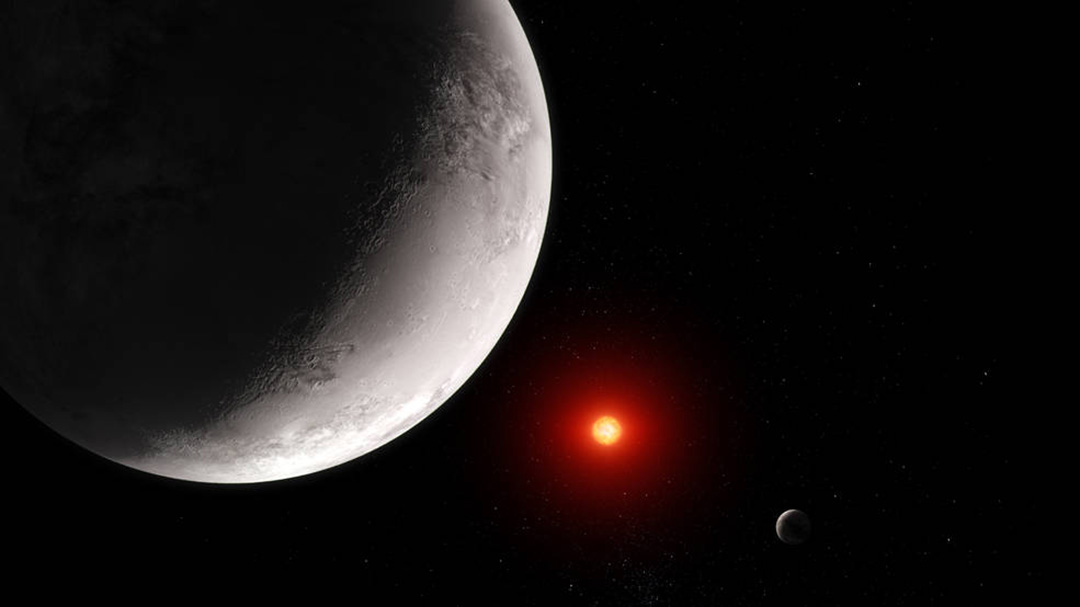Ever since it was discovered that the Trappist-1 System is host to at least seven rocky planets, the planetary system has been one of the primary targets in the search for the signs of life outside our Solar System.
Of the extra-solar planets, or exoplanets, of Trappist-1, at least three reside in the habitable zone of their star, representing the most Earth-like worlds ever found orbiting a single star in this region, which is neither too hot nor too cold to prevent the existence of liquid water — a vital ingredient for life as we know it.
The concentration of Earth-like worlds with the possibility of liquid water around the star Trappist-1, a red dwarf located around 40 light years away from Earth, was discovered in 2017. Further investigations in 2018 and 2021 would reveal that some of the Trappist-1 planets could actually harbor more water than all the oceans of Earth combined, and that these exoplanets may be made of the same materials as Earth — iron, oxygen, magnesium, and silicon — albeit in different ratios.
The real mouth-watering investigations of the Trappist-1 planets were yet to come, however, with the James Webb Space Telescope (JWST) launched on Christmas Day 2021, promising to allow astronomers and planetary scientists to perform deep investigations of the atmospheres of these worlds and potentially discover if they have “biomarkers” — signs of the right stuff needed for life.
Now, an investigation of the second planet from the red dwarf star, Trappist-1c, published in the journal Nature has revealed that the planet lacks a thick carbon-dioxide atmosphere.
“The brightness and temperature we measured for TRAPPIST-1 c is inconsistent with what we would expect if the planet were a true Venus twin [the second planet from the sun],” said the study’s lead author and a graduate student at the Max Planck Institute for Astronomy in Germany, Sebastian Zieba. “That is a thick, carbon dioxide-dominated atmosphere. The results are more consistent with a thinner atmosphere or the planet being a bare rock.”
The lack of a positive result may seem like a negative, but Zieba points out that really isn’t the case here as the work demonstrates how far exoplanet science has come and the contribution the JWST is poised to make to the field.
“I don’t think this discovery is disappointing. We still don’t know a lot about rocky exoplanet atmospheres,” the researcher said. “Every time we observe one of these rocky worlds, we continue to paint a clearer picture of the nature of these worlds.”
James Webb Space Telescope plays “peek-a-boo” with Trappist 1c
Zieba and the team investigated Trappist 1c using the JWST’s Mid-Infrared Instrument (MIRI), watching as the planet moved behind its parent star during an event called a secondary eclipse.
“We observed four secondary eclipses of Trappust-1c during which the planet disappears behind the star, and we only observe the stellar light,” Zieba explained. “Right before and right after the eclipse, we see the star together with the dayside of the planet. From this peek-a-boo game with the planet, we can measure the light emitted from the planet [its flux] and determine its temperature.”
The researcher said that he and the team confidently detected the decrease in light when the planet disappeared behind its star. The drop in flux that JWST detected during the eclipse was just 0.04%.
“For our observations, we used the Mid-Infrared Instrument (MIRI) on JWST combined with a filter so that we only observe the light coming from the planet around 15 micrometers,” Zieba continued. “We did that because carbon dioxide gas preferentially absorbs at 15 micron light, so if TRAPPIST-1 c has a carbon dioxide-rich atmosphere, the planet would appear dimmer at that wavelength. We, therefore, directly learn something about the amount of carbon dioxide in the planet’s atmosphere by observing the planet in this mode.”
The lack of a thick carbon dioxide atmosphere suggests that Trappist-1c formed with very little water, a key ingredient for life. Zieba suggests that Trappist-1c may have, at some point, had an atmosphere but that this could have been stripped away by harsh radiation from its parent red dwarf star, or M dwarf, which is now cool but was for its first billion years of life, a source of intense ultraviolet and X-ray radiation.
“Small stars like TRAPPIST-1 are blasting their planets with ultraviolet radiation and flares for long times,” he added. “The planets in the system which are the closest to their host star are the most likely to have lost their atmospheres. This is because small stars like TRAPPIST-1 are known to be active in UV radiation for long times and produce many flares. This can lead to atmospheric loss.”
No atmosphere but a crucial test
The investigation of Trappist-1c may not have yielded a carbon dioxide atmosphere or revealed the potential for liquid water and life on a world outside the Solar System, but it is an important step in exoplanet investigation. This is because it demonstrates the capability of the JWST to probe rocky worlds and their atmospheres to a level that other instruments could not.
“We want to especially know if small stars can host habitable planets. We know that rocky planets around M-dwarf stars are particularly vulnerable to losing their atmospheres,” Zieba continued. “These small stars typically have more frequent flares and emit lots of UV radiation early in their lives.”
Astronomers don’t know if rock planet atmospheres commonly survive around red dwarf stars like Trappist-1, meaning these observations are helping with answering this major question. The observations were something of a feat in themselves too.
“I was really positively shocked when I saw the eclipse. It’s a tiny signal, and it’s really amazing that we are now finally able to do this using the new JWST,” Zieba added. “Previous observations by the Hubble and Spitzer space telescopes were pretty inconclusive, and many scenarios could have explained the observations made by these smaller observatories: clouds, carbon dioxide atmospheres, oxygen atmospheres, or no atmospheres at all. Any of these scenarios could have explained the former observations.
“It’s great that we are now able to further pin down the truth.” Zieba also explained that the observations of TRAPPIST-1 c with the JWST make it the smallest exoplanet with a measured flux, and with a temperature of 380 Kelvin, it also has the lowest temperature measured for a transiting exoplanet.
“In the pre-JWST era, the lowest temperature which we were able to measure was for LHS 3844 b at a toasty 1000 Kelvin!” he said.
What about the other Trappist-1 planets?
Trappist-1c isn’t the only planet in this system to be found lacking an atmosphere. Earlier this year, the closest planet to the red dwarf star, Trappist-1b, was found to be similarly stripped to a bare rocky world lacking carbon dioxide.
This definitely has an impact on the possibility of finding atmospheres around the other Trappist-1 planets and, thus, for the existence of life in the system.
“If TRAPPIST-1 b and c would have shown thick atmospheres, that would have surely increased the probability of finding atmospheres on the other planets in the system,” Zieba explained. “Planets further away from the host stars are maybe more likely to have kept their atmospheres. In the end, we will only know if the other Trappist-1 planets have atmospheres when we observe them.”
The researcher added the good news is all planets in the TRAPPIST-1 system are scheduled for observation during JWST’s first year of operation. “Results from TRAPPIST-1 b and c have now been published. The other planets will follow. So stay tuned for new results from the other planets!” concluded Zieba.
Reference: Sebastian Zieba, et al., No thick carbon dioxide atmosphere on the rocky exoplanet TRAPPIST-1 c, Nature (2023). DOI: 10.1038/s41586-023-06232-z
Feature image: An illustration shows the rocky exoplanet Trappist-1c one of the seven planets orbiting the star Trappist-1. Credit: NASA, ESA, CSA, Joseph Olmsted (STScI)

















